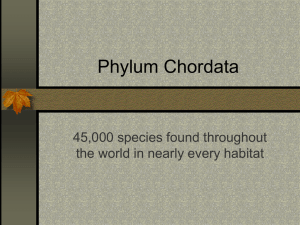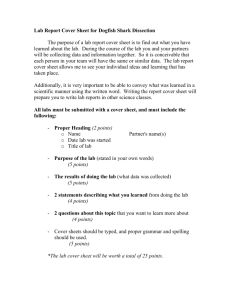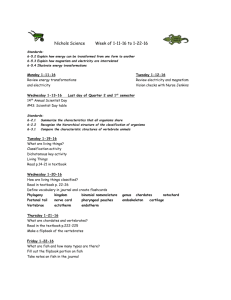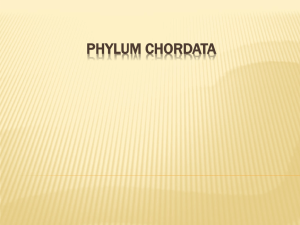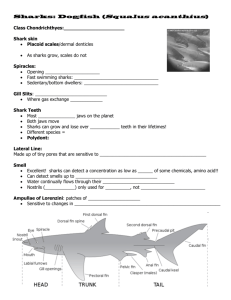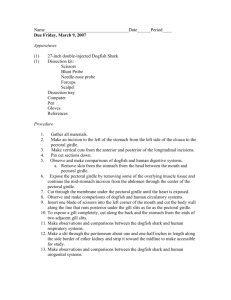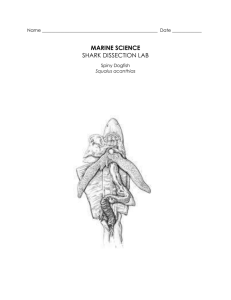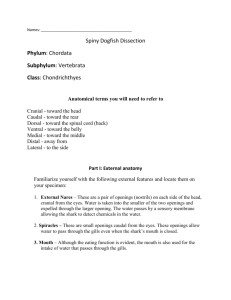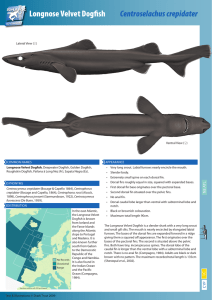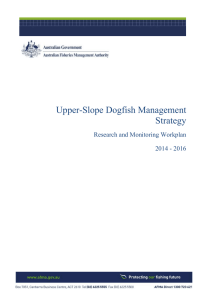Phylum Chordata
advertisement
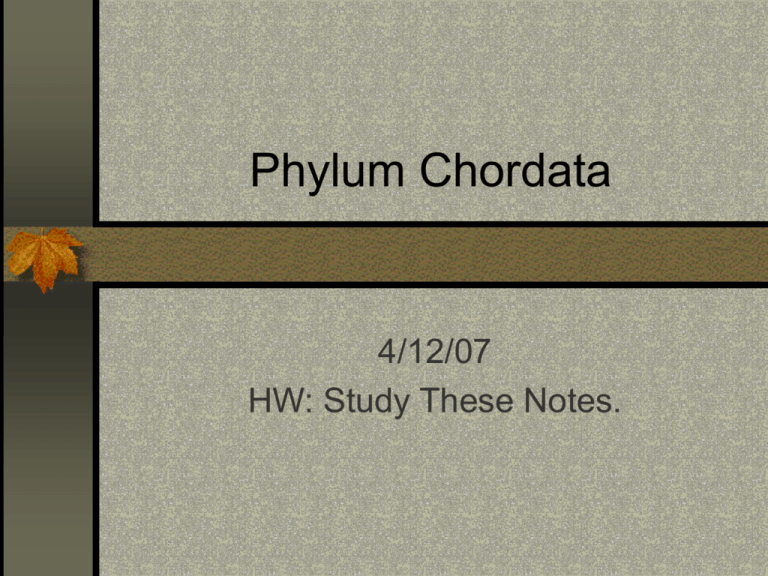
Phylum Chordata 4/12/07 HW: Study These Notes. General characteristics 1. bilaterally symmetrical, deutersostomate animals – an animal whose mouth develops from cells other than those at the opening of the gastrula. deuterostome General characteristics, cont’d 4 unique characteristics present at some stage in development: Notochord Pharyngeal Slits Dorsal Tubular Nerve Cord Postanal Tail Notochord The notochord is: a supportive rod that extends most of the length of the animal dorsal to the body cavity and into the tail Notochord on developing zebrafish. Pharyngeal Slits Pharyngeal Slits: a series of openings in the pharyngeal region between the digestive tract and the outside of the body Dorsal Tubular Nerve Cord Dorsal Tubular Nerve Cord: runs along the longitudinal axis of the body, just dorsal to the notochord, and usually extends anteriorly as a brain Postanal Tail The postanal tail: extends opening posteriorly beyond the anal Examples of Chordates 1. sea squints (or tunicates) 2. amphioxus 3. lampreys 4. hagfish 5. sharks, rays, skates 6. bony fishes 7. frogs, toads, salamanders 8. alligators, snakes, lizards 9. birds 10. mammals Dogfish Shark The representative member of the phylum Chordata we will begin with is the spiny dogfish shark, Squalus acanthias. phylum Chordata (having general characteristics listed above) subphylum Vertebrata (having backbone) class Chondrichthyes (skeleton made of cartilage) subclass Elasmobranchii The spiny dogfish shark, Squalus acanthias. a.k.a piked dogfish, skittledog, spotted dogfish, white-spotted dogfish, codshark, and thorndog Dogfish Anatomy Habitat Worldwide distribution, from the temperate to the subpolar regions, from the shallow waters of the seashore to depths of 100 fathoms (600 feet) Niche They are voracious eaters, feeding on: fish Crustaceans Squid Gastropods jelly fish even red and brown algae. omnivorous – devouring both plant and animal matter Life Span Typically from 25-30 years. Reproduction Internal fertilization; most shark “pups” hatch internally, and continue their development within the uterus of the mother Ovoviviparous – born alive as much smaller versions of the adult Gestation period up to 2 years (the longest of any vertebrate) Adaptations Sharks do not drink water?! The regulate their osmotic pressure by retaining a high concentration of urea and other solutes in their body fluids. Water enters their cells by osmosis. Adaptations, Cont’d The lack a swim bladder as seen in most bony fish. The above 2 facts are responsible for the following interesting fact. Sharks must keep moving in order to survive. If they stop moving they sink because they are somewhat heavier than the water they displace. If stopped, they sink, and will be crushed by the water pressure of the deep ocean. Sharks of the deeper ocean must continue to move from the moment of birth to the moment of death! That’s why they eat so much!!
